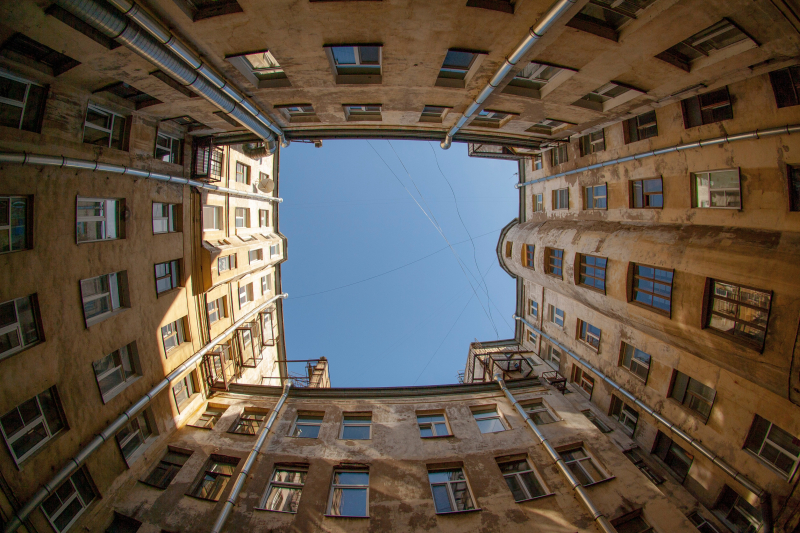First off, let’s see about the Russian way of writing addresses. In short, it’s not much different from how addresses are written in English (from specific to general), save for writing the zip code at the very end. Still, you can sometimes come across the old way of spelling, which is from general to specific, but that won't be hard to figure out, as well. And, quite naturally, Russian addresses come with many different abbreviations – which may cause quite a bit of confusion if you don’t know what they are about.
Basically, every building (let’s say every building in St. Petersburg, to be more specific) is located at some kind of road, square, or embankment. While the latter two shouldn’t be a problem (a square (площадь, ploschad’) will be abbreviated as “пл.”, and an embankment (набережная, naberezhnaya) will be abbreviated as “наб.” along with the name of a river or canal, the thing with roads is entirely different. To begin with, it’ll never be called a road, but some particular kind of a road. Those include (but are not limited to):
Улица (ulitsa) - a street, the most common name. Abbreviated as “ул.”.
Проспект (prospect) - an avenue. Abbreviated as “пр.”.
Переулок (pereulok) - the closest translation translation being “backstreet” or “lane”, it is basically a street as well (oftentimes a small and really old one). Abbreviated as “пер.”.
Аллея (alleya) - an alley. Once again, that would be a regular street, usually with some trees on the side. As there’s no official abbreviation, it can be abbreviated in any way possible, the most common one being “ал.”.
Бульвар (bul’var) - a fancy name for an alley. Abbreviated as “б-р.”.
Тупик (tupik) - a dead end; for whatever reason, those are also used for addresses. Abbreviated as “туп.”.
One other thing that often causes confusion is the deal with an address having several “buildings” to it. In the spelling of an address, this will usually be “корпус” (korpus, “кор.”) or “литера” (litera, “лит.”). For example, the address of one of ITMO’s buildings has both: “Новоизмайловский проспект, д.34, кор.3, лит.А”. So, what does that mean? In fact, this means that in order to find it, you will have to search for a group of buildings at this address and then look for the one you need - or enter the correct address in Google Maps. Speaking of the latter, note that the English version of the app has quite an ambiguous approach to using Russian names (like using the term “embankment” but transliterating “ulitsa”), so you might have to try several different ways of spelling an address before you get it right.
Finally, there’s one simplest advice I can give you for dealing with all these particulars: asking is always easier. It’s not really hard to find an English speaking person in St. Petersburg, and even if you don’t, you’ll still have a chance to practice your Russian!




